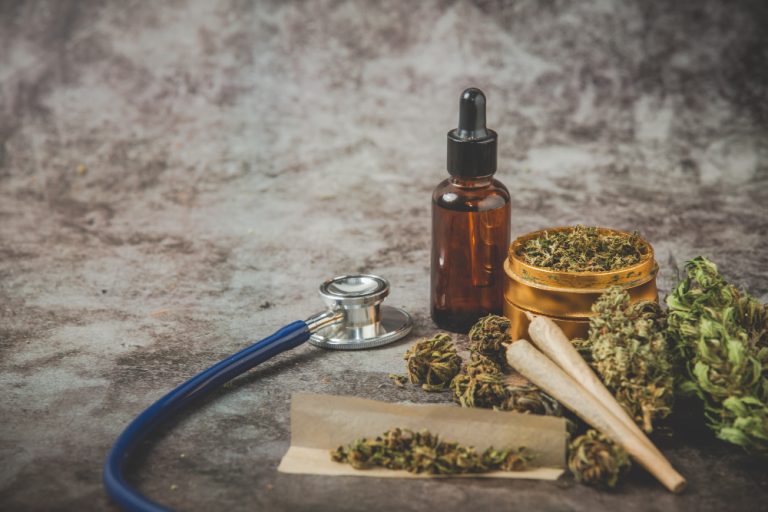Addiction often begins with small steps. A casual experiment, peer influence, or curiosity may introduce someone to substances that appear harmless at first glance. Over time, these substances can lead to the use of more dangerous drugs—a process often described through the concept of gateway drugs.
Understanding gateway drugs is essential for parents, educators, and individuals themselves. It sheds light on why early intervention matters and how professional support systems such as Nasha Mukti Kendra in Pinjore can help prevent experimentation from spiraling into full-blown addiction.
What Are Gateway Drugs?
Gateway drugs are substances that, when used, increase the likelihood of trying stronger and more harmful drugs in the future. The idea is not that everyone who tries a gateway drug becomes addicted, but rather that these substances often serve as the “first step” in a pathway that may lead to more severe forms of drug use.
Commonly identified gateway drugs include:
-
Nicotine: Found in cigarettes and e-cigarettes, nicotine is addictive and often starts during teenage years.
-
Alcohol: Widely available, alcohol lowers inhibitions and can lead individuals to try other substances.
-
Cannabis (Marijuana): While its legalization in many places has changed perceptions, research suggests it may act as a stepping stone for some users.
-
Prescription Drugs: Misuse of painkillers, sedatives, or stimulants can create dependence and open the door to stronger illicit drugs.
Why Are Gateway Drugs So Risky?
-
Brain Development and Vulnerability
Young people are especially vulnerable to gateway drugs because their brains are still developing. Early exposure to addictive substances can alter brain chemistry, making it harder to resist stronger drugs later. -
Lowered Perception of Risk
Experimenting with “milder” substances reduces fear of drug use. Over time, individuals may perceive stronger drugs as less dangerous. -
Social Influence
Gateway drugs are often consumed in social environments. This peer influence can lead to exposure to other substances, gradually normalizing risky behaviors. -
Tolerance and Escalation
Initial use may no longer provide the same “high,” leading individuals to seek stronger substances to achieve the same effect.
The Debate Around Gateway Drugs
It’s important to note that not everyone who tries gateway drugs will move on to harder substances. The debate often lies in whether gateway drugs directly cause addiction or simply indicate an individual’s vulnerability to substance use.
Factors such as genetics, environment, peer groups, and mental health play significant roles in determining who transitions from gateway substances to more harmful drugs.
Nevertheless, recognizing the potential dangers allows families and communities to intervene early.
Preventing the Gateway Effect
Prevention begins with awareness and education. Here are some effective approaches:
-
Early Education: Teaching children and teens about the risks of substance use helps them make informed choices.
-
Healthy Coping Mechanisms: Encouraging sports, hobbies, and creative outlets reduces the appeal of drugs.
-
Parental Involvement: Open conversations and strong family support can discourage experimentation.
-
School Wellness Programs: Schools that include awareness programs in their curriculum help shape positive behavior in youth.
When early signs of substance use appear, professional help becomes essential. Reputable centers like Nasha Mukti Kendra in Pinjore offer counseling, detox programs, and preventive care to ensure that occasional experimentation does not escalate into dependency.
How Nasha Mukti Kendra in Pinjore Helps
Rehabilitation centers are not just for individuals battling severe addiction—they also play a preventive role. At Nasha Mukti Kendra in Pinjore, experts provide:
-
Individual Counseling: To address the root causes of experimentation and substance use.
-
Detoxification Programs: For those already developing dependency, ensuring safe withdrawal.
-
Therapeutic Activities: Such as yoga, meditation, and group therapy to build resilience.
-
Family Support: Helping families recognize warning signs and provide guidance.
-
Aftercare Programs: To prevent relapse and encourage long-term healthy living.
This holistic approach ensures that individuals not only recover but also build the strength to resist future temptations.
The Role of Society in Combating Gateway Drug Use
Addiction prevention is not solely an individual or family responsibility—it requires community involvement. Society can contribute by:
-
Promoting awareness campaigns
-
Creating safe recreational spaces for youth
-
Reducing the stigma around seeking help
-
Supporting accessible rehabilitation services
When communities acknowledge the seriousness of gateway drugs, they take a crucial step toward minimizing addiction rates.
Final Thoughts
Gateway drugs may seem harmless at first, but their role in leading individuals toward stronger substances cannot be ignored. Early intervention, education, and professional support are key to breaking the cycle before it starts.
While not everyone who experiments will develop an addiction, the risks are significant enough to warrant caution. Centers like Nasha Mukti Kendra in Pinjore remind us that timely help, compassionate care, and awareness can change lives—turning potential struggles into opportunities for healthier, brighter futures.


